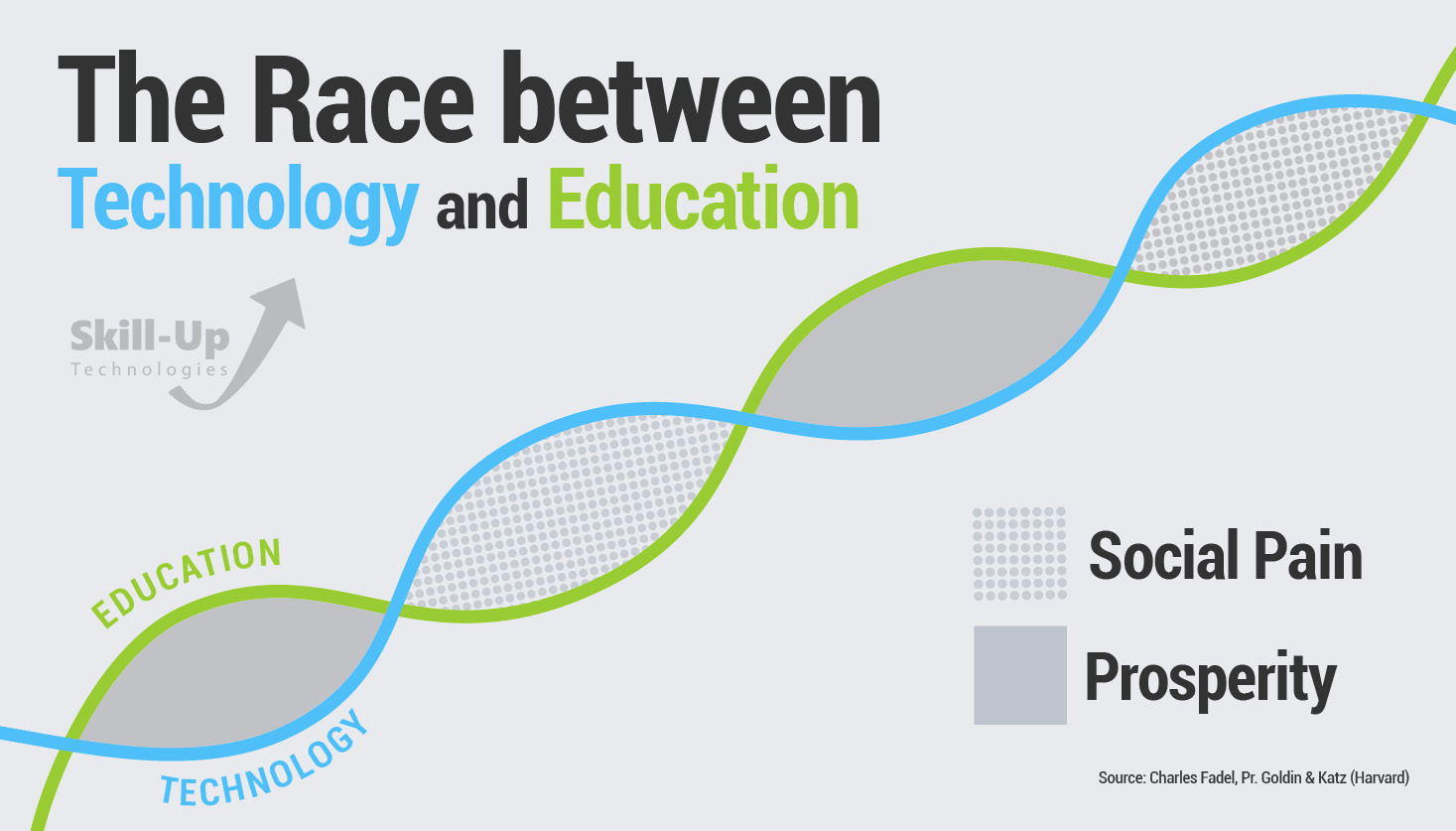Just a decade ago, blockchain was virtually unheard of. Now the technology is being widely implemented by banks and major corporations. But with such a new field, where are these companies finding a skilled hiring pool? And who is available to train the next generation of workers? These are the questions facing both institutions of higher education and hiring/training managers. And blockchain is just one example. Fields such as big data, artificial intelligence, robotics, and information security are going to be demanding more and more from our IT workforce in the next few years. We need to start preparing now for the educational needs of the future.
The IT Skills Gap
The concept of an IT skills gap is hardly new. In fact, there are those who don’t believe it exists at all. But there is no denying that things are changing and we may not be equipped to meet those changes. The skills gap refers to the disparity between the required number of skilled workers at any given time and the available hiring pool. On a deeper level, it refers to the skills available in the current workforce vs. the skills required. The World Economic Forum “The Future of Jobs Report 2018” projects that by 2022, at least 54% of employees will require a substantial amount of additional training to meet the demands of the workforce. Likewise, the European Commission claims that by 2020, they will face a shortage of more than 750,000 information technology employees, even while unemployment rates are on the rise. These numbers reflect the need for an enhanced educational system to train for skills we may not have even created yet.

Education Challenges
Unfortunately, creating educational programs for this IT boom is not as simple as it may seem to some. There are a number of factors that impact the success of students and the programs as a whole.
Support/Attrition
One of the biggest hurdles for training this new workforce lies within the student population. Attrition can be high, especially for students in online learning programs. Not only are many of them juggling work and education, but the material can be challenging. With a variety of learning styles, prior experience and knowledge, and on-the-ground support, many students may falter.
Disconnected Certification Programs and Learning Tools
In order to meet some of the ongoing demands for a well-trained workforce, many companies, such as Microsoft, Google, Amazon, and IBM, have created their own training and certification programs. These come with in-house expertise and front-line information, but may create an inconsistent and overwhelming learning experience without any way to tie the materials together or provide much-needed support.
Qualified Educators
We’ve already established that technology is evolving at dizzying speeds. It’s extremely challenging to build a cadre of educators who are both prepared to teach and qualified as experts in innovative technologies. The best candidates to teach are typically out in the field doing the work.

Curriculum Development/Rich Media
Even if educational institutions can find qualified educators, developing curriculum for fields that are constantly changing is no small feat. By the time curriculum is written and tested, it could already be out of date. Employing proven educational strategies such as rich media and hybrid learning opportunities may fall outside of the skills and scope of many colleges and universities.
Finding Solutions
Colleges and universities who are facing these hurdles may want to look into a learning partner who can assist with curriculum development, testing and deployment, and updates over time. Skill-Up Technologies was created to address many of those educational concerns, as well as to help close the IT skills gap. They can assist institutions in creating white label IT programs that reflect a unique brand identity while also training top-notch IT professionals.
Solutions include:
Modular Curriculum Options
When it comes to creating a cohesive and comprehensive learning solution, a modular approach may work best for IT programs. Rather than present the same offerings as other institutions, these departments can combine various elements to create customized programs that meet the specific learning needs of their students.
Rather than present the same offerings as other institutions, these departments can combine various elements to create customized programs that meet the specific learning needs of their students.
Modern Curriculum Development Tools
Unlike many colleges and universities, Skill-Up Technologies has the tools and resources to develop courses to 21st century standards, from online collaboration tools to engaging rich media. By using their areas of expertise, they can save institutions money and time while providing the best hybrid learning opportunities available.
Nimble Curricula
Working with a learning platform has additional benefits in the form of nimble content creation. Third-party curriculum development frees educators to focus on what they do best while also staying current in their field. And because the content is drawn from front-line experts and deployed from a central source, it can remain up-to-date with no additional effort from the learning institution.
Meeting Student Needs
Skill-Up Technologies has also placed a focus on student retention and support. The blended learning model speaks to a range of learning styles and support needs, and engaging material keeps students focused outside of the classroom. These approaches have been so successful that recent program partners have seen a 300% increase in completion rates.
Whether it be for blockchain or the next new technology to come down the pike, there’s no doubt that colleges and institutions will have to make changes to stay current and competitive in today’s IT world. How they choose to do so may be the key to whether or not we can begin to close the IT skills gap. Learning partners like Skill-Up Technologies are well poised to smooth this transition as we usher in a new technological revolution.


